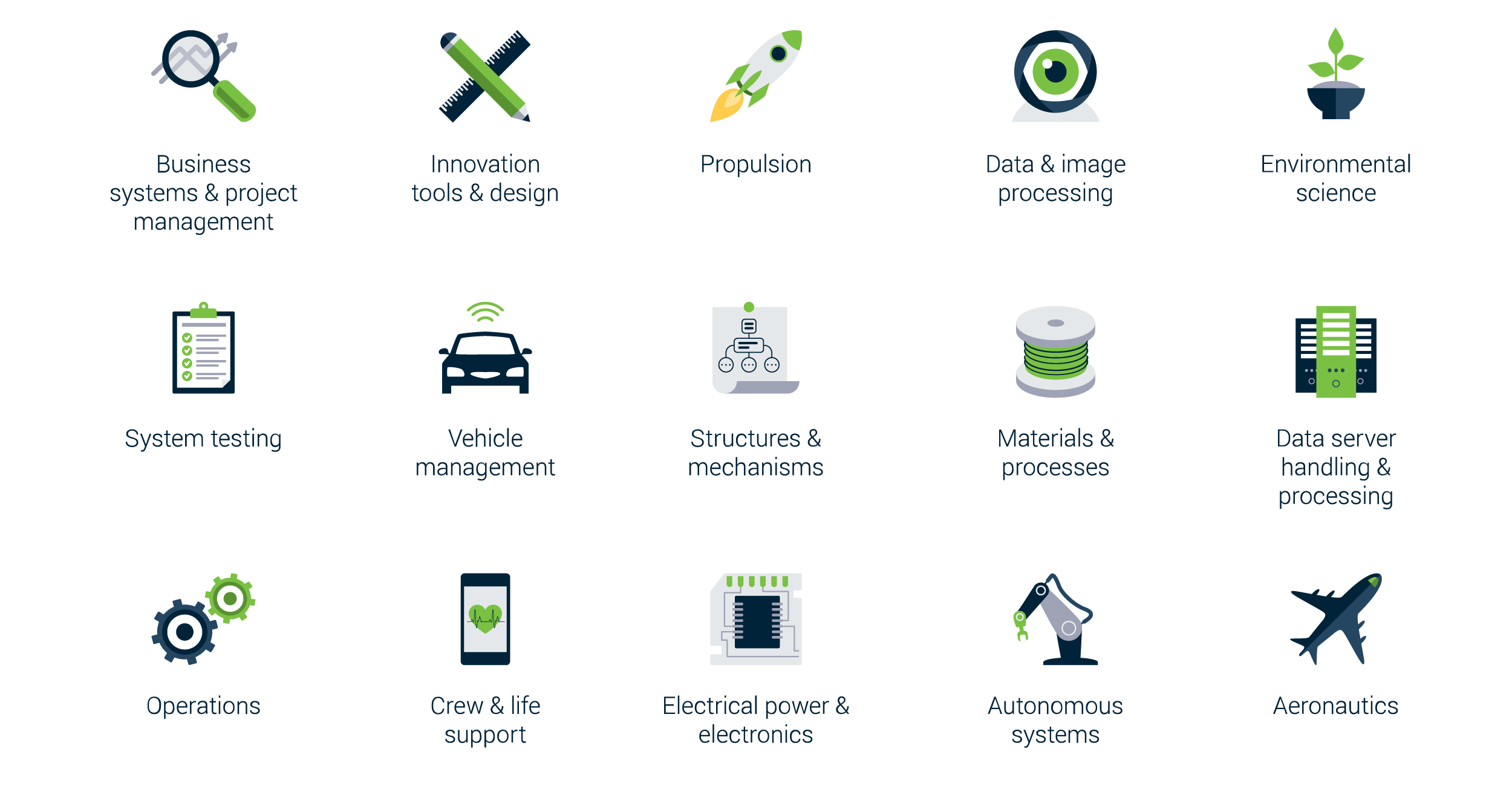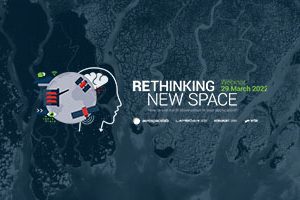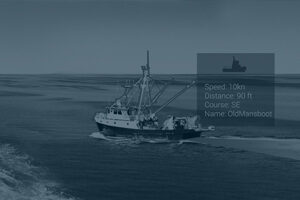AI transforms the way space companies and institutes are organized. Beyond space exploration, it’ll optimize 15 essential and costly tasks. Get an in-depth analysis of each use case on the challenge, opportunity and technology.

1. Business systems & project management
Project management AI
Challenge
Every business, big or small, has to deal with project management. This can be a time-consuming task and nowadays is allocated to a project manager. In projects such as manufacturing spacecraft or satellites, project management is very important but can also be very complex due to the nature of the project. AI can be used to lift the burden off the shoulders of a project manager and possibly even improve the outcome of the project.
AI opportunity
Project management AI is a system that can perform management and administration of projects without human input. It’s able to automate simple tasks, produce key project performances and use the gathered insights to make recommendations and actions. This will be highly beneficial for the project manager who will have more time to spend on other tasks.
AI technology
The key AI technologies that will be used here are Scheduling/Search/Optimization software (SSO), Natural Language Processing (NLP) and Robotic Process Automation (RPA). SSO can be used for automated planning and scheduling, NLP will be used to understand the written texts and intelligently reason about it. RPA can then be used to automate some of the project management tasks, with input from the NLP algorithms where necessary.
2. Integration tools & design
Smart dashboards with AI
Challenge
Both in spacecraft as in the control centers on earth, astronauts and engineers get a lot of feedback from many different sensors. It can be difficult to watch all the different feedback streams and at the same time analyze them. Both tasks are cut-out for AI. Being able to simultaneously analyze multiple feedback streams is what makes AI so great in this situation.
AI opportunity
Dashboards are nothing new, but making them intelligent is. AI can help the scientist, engineers and astronauts by analyzing the multiple feedback streams simultaneously and only give back key insights, patterns, anomalies and other alerts it encounters when analyzing the data.
AI technology
Anomaly detection and pattern recognition are the key AI technologies used in this implementation. Anomaly detection and pattern recognition will boil down the vast amount of data into manageable insights, anomalies and alerts.
3. Propulsion
Machine Learning for rocket engine design
Challenge
Designing and testing a rocket engine is a very difficult task. Time, cost and safety make it impossible to physically build different types of rocket engines and test these prototypes on a test site. Hence computational simulations have to be designed to test different rocket engines. However, these computational simulations are also extremely time-consuming. Machine Learning can help decrease the computation time.
AI opportunity
AI can be of great importance for decreasing the computation time of rocket engine design simulations. By creating a hybrid model, a combination of physics modelling and data-driven learning, simulations can run in a fraction of the time. This will allow rocket engine engineers and scientists to determine the rocket engine performance in a variety of operating conditions. Deep learning techniques have shown to aid creating CFD mesh proposals and even solving proposing solutions for the Navier-stokes equations with increased speed compared to regular solvers.
AI technology
Scientific Machine Learning is an emerging research area focused on the opportunities and challenges of Machine Learning in the context of complex applications across science, engineering, and medicine.
4. Data & image processing
AI-enhanced imagery
Challenge
Satellites produce about 150 terabytes of data everyday of which many are images. Satellites used for earth observation require human intervention when it comes to analyzing the captured images. By the time the captured image reaches earth and a person has been able to analyze it, the satellite is already moved on to capture another region of the planet. If the person thinks the image should be retaken because of some faults, they have to wait until the satellite is moved back around to the same position to capture a new image. This situation is very cumbersome and can be improved by using AI to analyze the images on the satellite itself.
AI opportunity
AI has the opportunity to cut back in communication between the satellite and earth, speeding up the image gathering process and more. By introducing an AI model that analyses the earth observation images on the satellite itself, it can instantaneously determine if there is something wrong with the captured image, and if necessary, demand a new image being taken before the satellite is moved on. By using an AI model on the satellite itself only the end product, good earth observation images, have to be sent back to earth.
AI technology
The AI technology of choice for image processing and analyzing is Convolutional Neural Networks (CNN). CNN models have proven their capabilities in many different fields and are an active part of AI research nowadays for further improvements. CNN models can be used to interpret and analyze the earth observation images to detect faulty images. Edge AI allows to process the data locally, which can lead to reduced communication bandwidth needs and faster reaction times for actions that are based on the input from the AI system.
5. Environmental science
Farm water management
Challenge
Fresh water becomes more and more scarce, so it’s important to be as economical as possible when using fresh water. On farms, crop fields are irrigated with fresh water, but often not economically. A tailor-made irrigation system for each crop field and even for each type of crop will result in the conservation of fresh water. Earth orbiting satellites and AI can help create these systems.
AI opportunity
Using imagery of earth orbiting satellites and the advanced AI technologies for image processing can effectively pinpoint which crop field needs irrigation at which point in time. A (semi-)continuous inspection of the crop fields and only irrigating the parts of the field that need to be irrigated will massively reduce the waist of fresh water in agriculture.
AI technology
Convolutional Neural Networks (CNN) are the AI technology to use when it comes to processing images. A CNN model can be trained on satellite images of crop fields to detect which field needs to be irrigated.
Download the perspective to continue reading on the other 10 ways AI transforms the space industry




